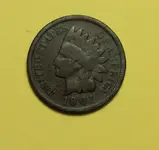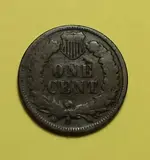Jarl
Hero Member
- Joined
- Jul 28, 2012
- Messages
- 822
- Reaction score
- 738
- Golden Thread
- 0
- Location
- Cedar Rapids, Iowa
- 🏆 Honorable Mentions:
- 1
- Detector(s) used
- CURRENT: E-Trac
FORMER:Minelab Explorer SE Pro, Garrett AT Pro & Garrett Pinpointer Pro Garrett GTAx 1000, Ace 250
HAVE USED: Teknetics & Bounty Hunters
WANT TO TRY: Tesoro and White's someday
- Primary Interest:
- All Treasure Hunting
- #1
Thread Owner
Hello,
A lot of the older coins I find have the classic 'green' crust on them, sometimes it is easy to remove with just water and maybe soap, but other times it is hard as cement. How do you remove that without destroying the patina of a decent coin? I know that hard mineralization in some cases can be removed by vinegar or some other acid...I have done it with success, but, that removes the deep tone luster that some coins have when they come out of the ground. Sometimes the green crust is really hard to budge and it partially covers the date of a coin. This is irritating. I have a few I am working on now, but all I feel safe using is peroxide...however, peroxide removes a lot of dirt well, but it isn't aggressive enough...without being too aggressive at the same time. I need a way to get rid of that hard green crust without altering the overall appearance of the coin(s). I was considering electrolysis but I think that would remove too much as well. What I used to do, and now I am trying to get away from doing, is something I read that archeologists do to clear matrix from fossils...they use a stylus point and press on the edge of the matrix to be removed until it 'snaps', then you wash or brush away the flakes. I did this with several of my green encrusted coins but later I realized that I was putting nicks on the coins themselves...these were not visible at first for some reason(I was using a loupe too). I suppose it could work maybe if your stylus wasn't too sharply pointed. Anyway, I knew that the coins I did this on were not valuable...only to me and my collection, but it worked well to uncover some dates.
Any advice appreciated! Thanks!
A lot of the older coins I find have the classic 'green' crust on them, sometimes it is easy to remove with just water and maybe soap, but other times it is hard as cement. How do you remove that without destroying the patina of a decent coin? I know that hard mineralization in some cases can be removed by vinegar or some other acid...I have done it with success, but, that removes the deep tone luster that some coins have when they come out of the ground. Sometimes the green crust is really hard to budge and it partially covers the date of a coin. This is irritating. I have a few I am working on now, but all I feel safe using is peroxide...however, peroxide removes a lot of dirt well, but it isn't aggressive enough...without being too aggressive at the same time. I need a way to get rid of that hard green crust without altering the overall appearance of the coin(s). I was considering electrolysis but I think that would remove too much as well. What I used to do, and now I am trying to get away from doing, is something I read that archeologists do to clear matrix from fossils...they use a stylus point and press on the edge of the matrix to be removed until it 'snaps', then you wash or brush away the flakes. I did this with several of my green encrusted coins but later I realized that I was putting nicks on the coins themselves...these were not visible at first for some reason(I was using a loupe too). I suppose it could work maybe if your stylus wasn't too sharply pointed. Anyway, I knew that the coins I did this on were not valuable...only to me and my collection, but it worked well to uncover some dates.
Any advice appreciated! Thanks!






